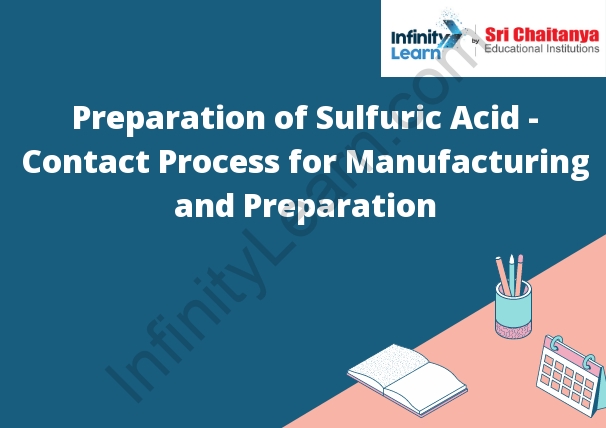Table of Contents
Preparation of sulfuric acid
Sulfuric acid is prepared by the reaction of sulfur dioxide with water. The sulfur dioxide is produced by the burning of sulfur in air. Preparation of Sulfuric Acid – Contact Process for Manufacturing and Preparation.

Pure sulfuric acid does not exist naturally on Earth due to its strong affinity to water vapor; for this reason, it is hygroscopic and readily absorbs water vapor from the air. Concentrated sulfuric acid is highly corrosive towards other materials, from rocks to metals, since it is an oxidant with powerful dehydrating properties. Phosphorus pentoxide is a notable exception in that it is not dehydrated by sulfuric acid, but to the contrary dehydrates sulfuric acid to sulfur trioxide. Upon addition of sulfuric acid to water, a considerable amount of heat is released; thus the reverse procedure of adding water to the acid should not be performed since the heat released may boil the solution, spraying droplets of hot acid during the process. Upon contact with body tissue, sulfuric acid can cause severe acidic chemical burns and even secondary thermal burns due to dehydration. Dilute sulfuric acid is substantially less hazardous without the oxidative and dehydrating properties; however, it should still be handled with care for its acidity.
Contact Process for Manufacturing of Sulphuric Acid
- Sulphuric acid is manufactured by the contact process, which involves the combination of sulphur dioxide and oxygen gases.
- The sulphur dioxide gas is produced by burning sulphur in air. The oxygen gas is produced by the electrolysis of water.
- The gases are mixed and passed through a reactor containing a catalyst, typically vanadium pentoxide.
- The reaction produces sulphuric acid and water. The sulphuric acid is then collected and cooled to produce the final product.
Preparation of Sulfuric Acid – Contact Process for Manufacturing and Preparation.




